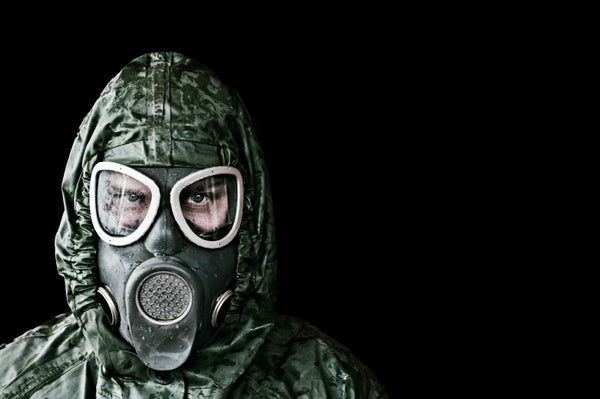This article was published in Scientific American’s former blog network and reflects the views of the author, not necessarily those of Scientific American
Nature is the ultimate problem-solver. Through evolution, organisms adapt to changing environments, gain competitive advantages and develop better survival tools.
This can be quite inspiring. Consider the human immune system’s balanced complexity. Cytotoxic T cells seek out and destroy harmful invaders, while regulatory T cells are poised to step in and shut down their aggressive cousins before they generate an autoimmune response.
Biological systems evolved over billions of years, which is why human researchers often try to emulate them. Gene editing with CRISPR-Cas9 was cribbed from bacterial immune defenses. PCR was also appropriated from nature. And there are many other examples.
On supporting science journalism
If you're enjoying this article, consider supporting our award-winning journalism by subscribing. By purchasing a subscription you are helping to ensure the future of impactful stories about the discoveries and ideas shaping our world today.
Nature has a dark side as well, of course. In the mid-14th century, bubonic plague—the Black Death—wiped out more than half of Europe. The 1918 influenza pandemic killed more than 50 million worldwide.
As new biological techniques advance, there are justifiable concerns these technologies could be used to create manmade pandemics. These worries often center on synthetic biology. Some policymakers and pundits believe these techniques are too simple; that virtually anyone with basic lab skills could leverage them to develop an effective biological weapon. The reality is far more complex and encouraging.
WEAPONIZING BIOLOGY IS HARD
Synthetic biology simplifies some research but does little to enable homemade biological weapons. It’s difficult to convince biological systems to do mass harm, and doing it efficiently requires sophisticated, and specialized, scientific knowledge.
Amateurs have consistently come up short. In the 1990s, the Japanese doomsday cult Aim Shinrikyo tried to weaponize botulinum toxin and failed to concentrate enough to kill a mouse. Even if they had isolated botulinum, delivering it as a weapon would have been daunting.
Aim Shinrikyo’s efforts were particularly sloppy, but even nations with sophisticated biological weapons programs have found nature can be difficult to master. The Soviet Union spent years trying to weaponize antibiotic resistant anthrax. As they added resistance genes, they found the bacteria lost virulence, ease of transmissibility and other “desirable” traits. The Soviets, as sophisticated as they were, could not have it all. Biological systems evolve to survive, and a microbe that quickly kills its host violates that central goal.
In any quest to weaponize biology, DNA synthesis is just a first step in a long, complex process. Weaponizing microbes requires even more complex, specialized work, such as milling particles to a specific size. Effective dispersal—through aerosolization or sprayers—poses further challenges. It’s difficult to accomplish without killing or disabling the microbe.
Each series of steps requires intense expertise in molecular and cell biology, chemistry and engineering—not to mention a building full of expensive equipment. In short, it’s extremely difficult to do in a garage.
These barriers still apply to microbes engineered with synthetic biology techniques. Could a group of bad actors use CRISPR-Cas9 gene editing or other tools to increase a microbe’s pathogenicity? It’s not impossible, but synthetic biology offers no advantages when weaponizing or dispersing the toxin.
NATURE IS THE MOST PRESSING BIOLOGICAL THREAT
Most technologies have the potential for benefit or harm, and synthetic biology is no different. But looking at the trade-off between risk and benefit, these technologies mitigate many more threats than they create.
We’ve recently experienced SARS, Ebola, Zika and other deadly outbreaks. These didn’t come from a lab, they came from nature. As humans encounter new pathogens, nature will continue to evolve microbes to more efficiently infect us. Importantly, nature has mastered an incredible tool: evolution. Compound this with transoceanic air travel, and our modern lifestyle is almost perfectly tuned to spread natural infectious agents.
Fortunately, we are developing new tools to address these potent threats, among them synthetic biology and directed evolution. For example, researchers at the Broad Institute have developed a low-tech, CRISPR-based tool to rapidly identify pathogens in the field. Called SHERLOCK, this paper-based test can detect a single RNA molecule to identify Zika, dengue and other pathogens. And, there is a second CRISPR-based platform for disease detection in development from Mammoth Biosciences.
These techniques could also help prevent pandemics through more active surveillance. For instance, enhanced oversight, powered by deep genomic sequencing, helped contain a recent monkeypox outbreak in Nigeria.
Synthetic biology can also accelerate our ability to develop new therapies. Once a viral protein is isolated, it can take six months or longer to incubate it in eggs and produce enough antibodies to create a vaccine. A DNA-based vaccine could be synthesized far faster. A piece of DNA, smartly delivered, could generate the necessary immune response and might take only a few weeks to develop.
Last year, Vanderbilt University Medical Center received a $28 million DARPA grant to test new approaches. Using synthetic genes from Twist Bioscience, Vanderbilt is developing a rapid response platform that could provide therapeutic antibodies for a completely novel pathogen in as little as 60 days.
Good policy decisions on emerging technologies are informed by a solid understanding of risks and benefits. Bioterrorism plots may make for good pulp novels and Hollywood movies, but in reality, virulent, natural pathogens pose a far greater danger to human life. Fortunately, we can leverage the emerging collection of synthetic biology tools to detect, mitigate and halt these outbreaks and save lives.
